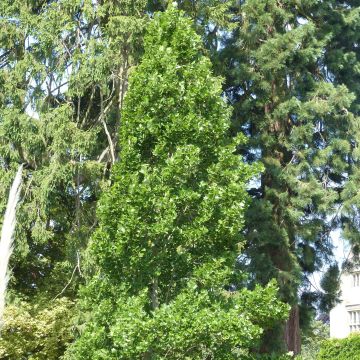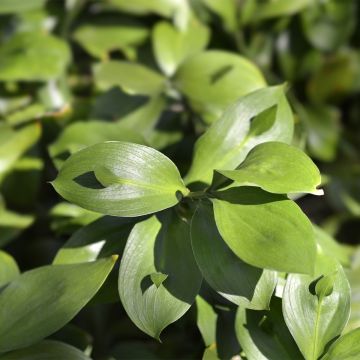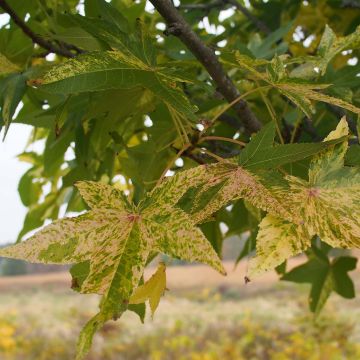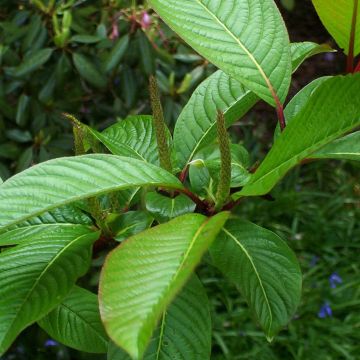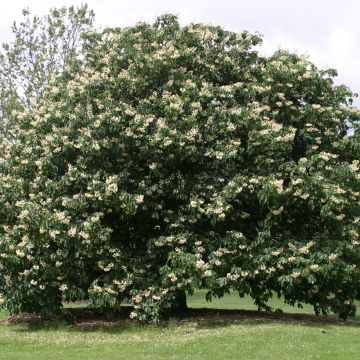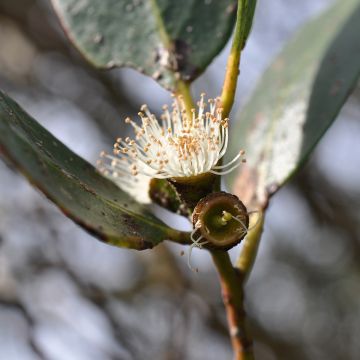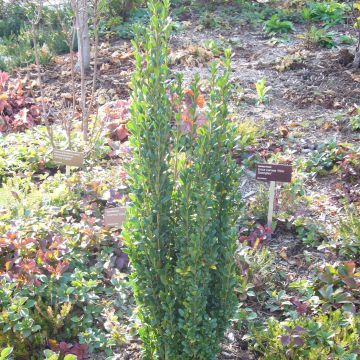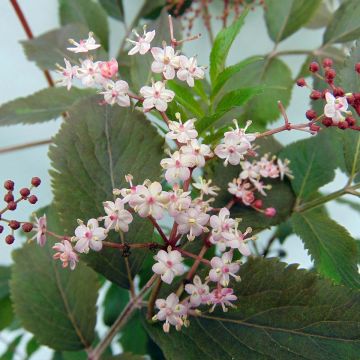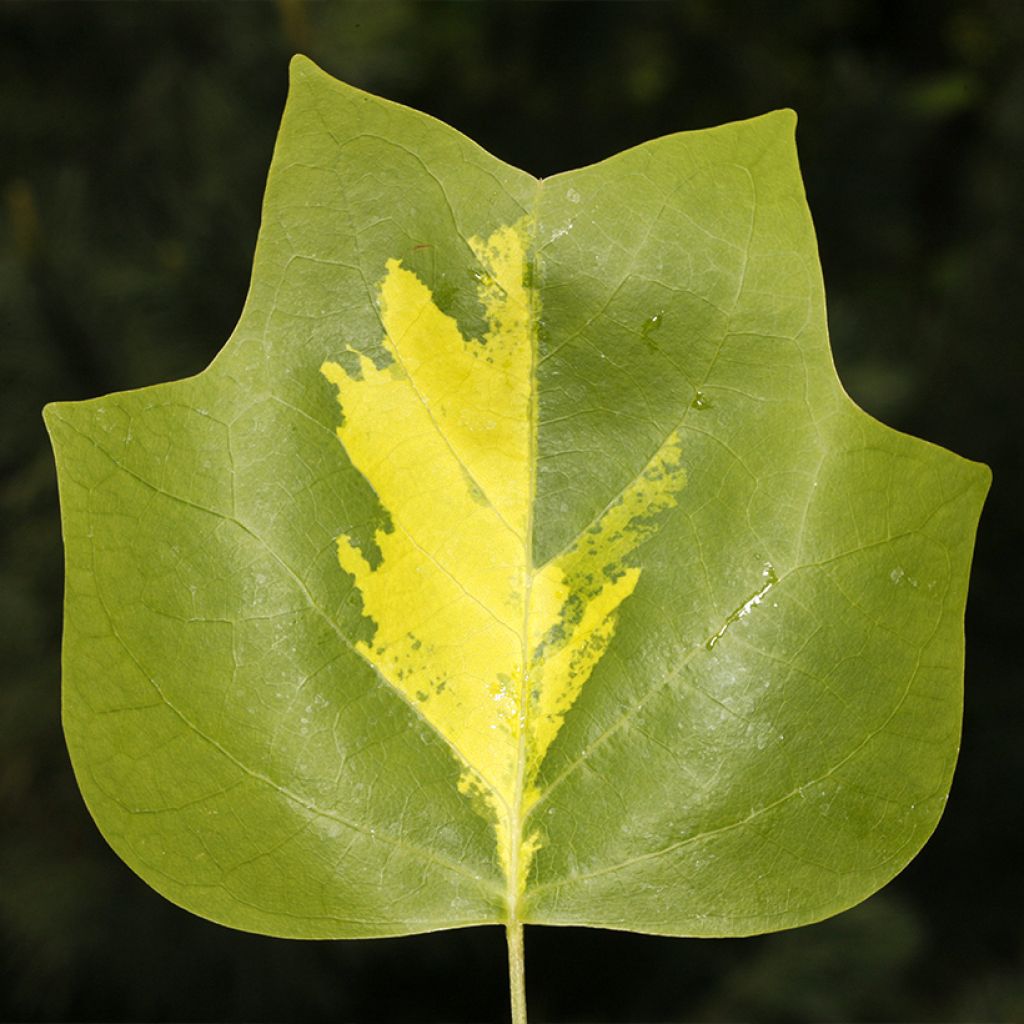

Liriodendron tulipifera Purgatory - Tulip Tree
Liriodendron tulipifera Purgatory - Tulip Tree
Liriodendron tulipifera Purgatory
Tulip Tree, Yellow Poplar, Tulipwood, Tulip Poplar
This plant carries a 24 months recovery warranty
More information
We guarantee the quality of our plants for a full growing cycle, and will replace at our expense any plant that fails to recover under normal climatic and planting conditions.
Oversize package: home delivery by special carrier from €6.90 per order..
Express home delivery from €8.90.
Does this plant fit my garden?
Set up your Plantfit profile →
Description
Liriodendron tulipifera 'Purgatory' is a selection of the Tulip Tree with particularly ornamental foliage, featuring large leaves of unusual shape and randomly speckled with bright yellow in the centre. This deciduous tree also offers beautiful autumn colours and original tulip-shaped, greenish-yellow flowers with orange accents, on a mature subject. It is a relatively slow-growing tree, eventually becoming large. It is best suited for medium-sized gardens or large plots.
The Tulip Tree, from the magnolia family, is native to the central-western United States. This tree, which can live up to 300 years (in Europe), can reach a height of 40m in its native regions. However, in our gardens, its adult size varies between 15 and 25m in height.
The cultivar 'Purgatory' was selected in 1996 at the Bomer Nursery in Zundert, Netherlands. It has a slower growth rate than the standard variety and differs by having a more modest stature, as well as larger leaves that are marked with golden yellow towards the centre. Ultimately, this tree will reach an average height of 9m with a spread of 5-6m. It has a broadly conical, curved habit, composed of a relatively short, straight trunk covered with a greyish bark and topped with a crown that reaches 5 to 6m in spread. The young branches are dark red, then become dark grey. Its 10 to 20cm leaves are deciduous and divided into 4 lobes with a pointed tip, separated by distinct notches. The foliage is a shiny, very vibrant green, randomly speckled with yellow in the centre, and turns yellow in autumn before falling. The flowering takes place from May to July. The flowers of this Liriodendron are solitary, with 9 very light green, slightly yellowish tepals, tinged with orange at the base, arranged in a wide cup shape like tulips. They are slightly fragrant, with a lemony scent. Inside the cup, there is a large cream-white central cone, surrounded by a crown of erect stamens measuring 4 to 5cm. Fruit forms on mature trees and resembles that of the magnolia: egg-shaped, dark brown, 5cm long, and persisting through winter. It releases winged achenes measuring 3 to 5cm.
The 'Purgatory' Tulip Tree is perfectly hardy and prefers rich, deep, and moist soils, and sunny exposures. It will fit well in a spacious garden, planted as a solitary tree on a lawn, near a large pond, or used as a boundary tree. It can be associated with tall blue conifers such as Cedrus libani atlantica 'Glauca', Cupressus arizonica 'Fastigiata', or Chamaecyparis lawsoniana 'Columnaris', for the contrast of foliage colours in autumn. Its bright foliage will also be enhanced a purple beech 'Riversii'.
Report an error about the product description
Liriodendron tulipifera Purgatory - Tulip Tree in pictures
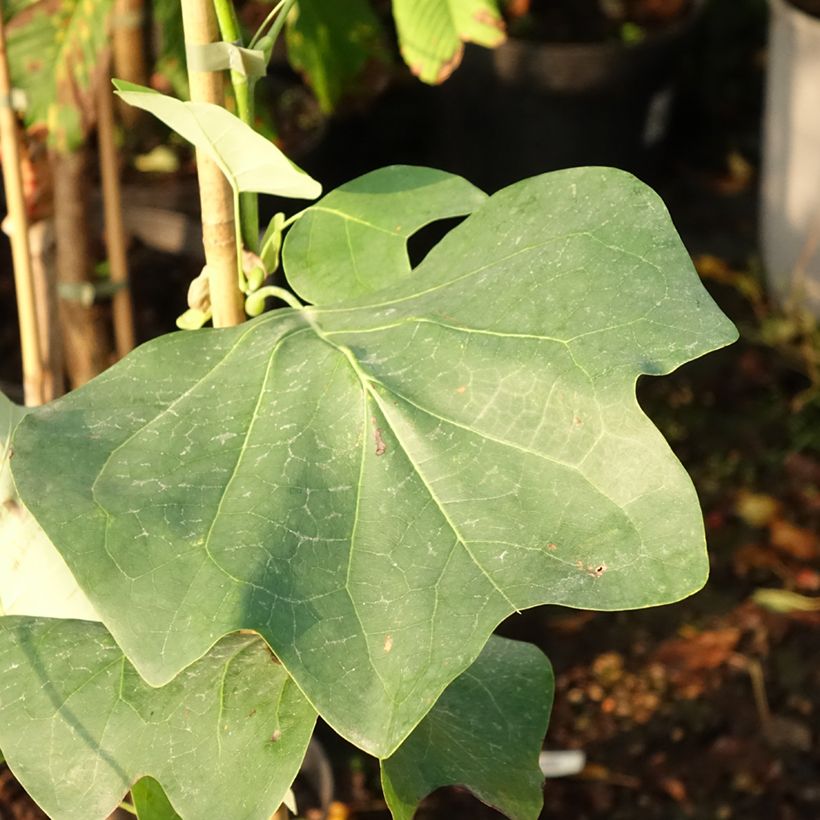

Plant habit
Flowering
Foliage
Botanical data
Liriodendron
tulipifera
Purgatory
Magnoliaceae
Tulip Tree, Yellow Poplar, Tulipwood, Tulip Poplar
Cultivar or hybrid
Other Liriodendron - Tulip tree
Planting and care
The 'Purgatory' Tulip Tree prefers deep, loose, rich, and clayey soils, and a sunny or semi-shaded exposure. It requires moist soil throughout the year and withstands cold winters perfectly. However, it does not tolerate drought well. It will adapt to slightly acidic, neutral, or slightly limestone soils. This tree does not appreciate significant pruning.
Note: This variety is known to be unstable, meaning that the variegation of the foliage can vary from one subject to another. If you notice that a new branch only bears entirely green leaves, which are different from the others, we advise you to prune it.
Planting period
Intended location
Care
This item has not been reviewed yet - be the first to leave a review about it.
Striking foliage shrubs
Haven't found what you were looking for?
Hardiness is the lowest winter temperature a plant can endure without suffering serious damage or even dying. However, hardiness is affected by location (a sheltered area, such as a patio), protection (winter cover) and soil type (hardiness is improved by well-drained soil).

Photo Sharing Terms & Conditions
In order to encourage gardeners to interact and share their experiences, Promesse de fleurs offers various media enabling content to be uploaded onto its Site - in particular via the ‘Photo sharing’ module.
The User agrees to refrain from:
- Posting any content that is illegal, prejudicial, insulting, racist, inciteful to hatred, revisionist, contrary to public decency, that infringes on privacy or on the privacy rights of third parties, in particular the publicity rights of persons and goods, intellectual property rights, or the right to privacy.
- Submitting content on behalf of a third party;
- Impersonate the identity of a third party and/or publish any personal information about a third party;
In general, the User undertakes to refrain from any unethical behaviour.
All Content (in particular text, comments, files, images, photos, videos, creative works, etc.), which may be subject to property or intellectual property rights, image or other private rights, shall remain the property of the User, subject to the limited rights granted by the terms of the licence granted by Promesse de fleurs as stated below. Users are at liberty to publish or not to publish such Content on the Site, notably via the ‘Photo Sharing’ facility, and accept that this Content shall be made public and freely accessible, notably on the Internet.
Users further acknowledge, undertake to have ,and guarantee that they hold all necessary rights and permissions to publish such material on the Site, in particular with regard to the legislation in force pertaining to any privacy, property, intellectual property, image, or contractual rights, or rights of any other nature. By publishing such Content on the Site, Users acknowledge accepting full liability as publishers of the Content within the meaning of the law, and grant Promesse de fleurs, free of charge, an inclusive, worldwide licence for the said Content for the entire duration of its publication, including all reproduction, representation, up/downloading, displaying, performing, transmission, and storage rights.
Users also grant permission for their name to be linked to the Content and accept that this link may not always be made available.
By engaging in posting material, Users consent to their Content becoming automatically accessible on the Internet, in particular on other sites and/or blogs and/or web pages of the Promesse de fleurs site, including in particular social pages and the Promesse de fleurs catalogue.
Users may secure the removal of entrusted content free of charge by issuing a simple request via our contact form.
The flowering period indicated on our website applies to countries and regions located in USDA zone 8 (France, the United Kingdom, Ireland, the Netherlands, etc.)
It will vary according to where you live:
- In zones 9 to 10 (Italy, Spain, Greece, etc.), flowering will occur about 2 to 4 weeks earlier.
- In zones 6 to 7 (Germany, Poland, Slovenia, and lower mountainous regions), flowering will be delayed by 2 to 3 weeks.
- In zone 5 (Central Europe, Scandinavia), blooming will be delayed by 3 to 5 weeks.
In temperate climates, pruning of spring-flowering shrubs (forsythia, spireas, etc.) should be done just after flowering.
Pruning of summer-flowering shrubs (Indian Lilac, Perovskia, etc.) can be done in winter or spring.
In cold regions as well as with frost-sensitive plants, avoid pruning too early when severe frosts may still occur.
The planting period indicated on our website applies to countries and regions located in USDA zone 8 (France, United Kingdom, Ireland, Netherlands).
It will vary according to where you live:
- In Mediterranean zones (Marseille, Madrid, Milan, etc.), autumn and winter are the best planting periods.
- In continental zones (Strasbourg, Munich, Vienna, etc.), delay planting by 2 to 3 weeks in spring and bring it forward by 2 to 4 weeks in autumn.
- In mountainous regions (the Alps, Pyrenees, Carpathians, etc.), it is best to plant in late spring (May-June) or late summer (August-September).
The harvesting period indicated on our website applies to countries and regions in USDA zone 8 (France, England, Ireland, the Netherlands).
In colder areas (Scandinavia, Poland, Austria...) fruit and vegetable harvests are likely to be delayed by 3-4 weeks.
In warmer areas (Italy, Spain, Greece, etc.), harvesting will probably take place earlier, depending on weather conditions.
The sowing periods indicated on our website apply to countries and regions within USDA Zone 8 (France, UK, Ireland, Netherlands).
In colder areas (Scandinavia, Poland, Austria...), delay any outdoor sowing by 3-4 weeks, or sow under glass.
In warmer climes (Italy, Spain, Greece, etc.), bring outdoor sowing forward by a few weeks.

































